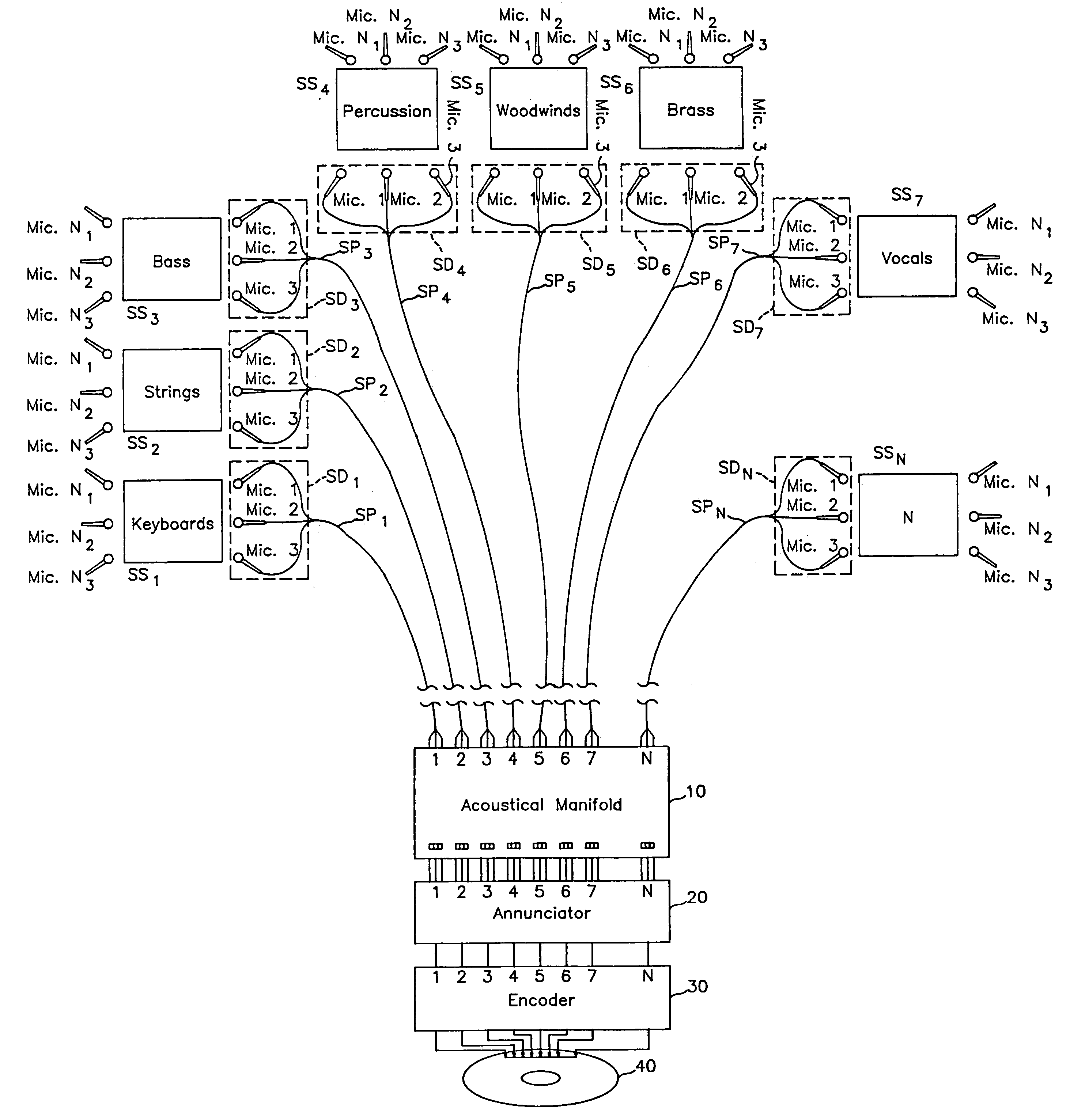Sound system and method for capturing and reproducing sounds originating from a plurality of sound sources
a sound system and sound field technology, applied in the field of acoustical reproduction and sound field reconstruction, can solve the problems of complex real sounds and musical signals, no signal, and other forms of audio signals (e.g. optical signals), although more reliable in the transmission of acoustical data, and encounter similar limitations
- Summary
- Abstract
- Description
- Claims
- Application Information
AI Technical Summary
Benefits of technology
Problems solved by technology
Method used
Image
Examples
Embodiment Construction
[0033]FIG. 1 is a schematic illustration of a sound capture and recording system according to one embodiment of the present invention. As shown in FIG. 1, the system comprises a plurality of sound sources (SS1–SSN) for producing a plurality of sounds, a plurality of sound detectors (SD1–SDN), such as microphones, for capturing or detecting the sounds produced by the N sound sources and for separately converting the N sounds to N separate audio signals. As shown in FIG. 1, the N separate audio signals may be conveyed over separate signal paths (SP1–SPN) to be recorded on a recording medium 40. Alternatively, the N separate audio signals may be transmitted to a sound reproduction system (such as shown in FIG. 2), which preferably includes N loudspeaker systems for converting the audio signals to sound. If the audio signals are to be recorded, the recording medium 40 may be, e.g., an optical disk on which digital signals are recorded. Other storage media (e.g., tapes) and formats (e.g....
PUM
 Login to View More
Login to View More Abstract
Description
Claims
Application Information
 Login to View More
Login to View More - R&D
- Intellectual Property
- Life Sciences
- Materials
- Tech Scout
- Unparalleled Data Quality
- Higher Quality Content
- 60% Fewer Hallucinations
Browse by: Latest US Patents, China's latest patents, Technical Efficacy Thesaurus, Application Domain, Technology Topic, Popular Technical Reports.
© 2025 PatSnap. All rights reserved.Legal|Privacy policy|Modern Slavery Act Transparency Statement|Sitemap|About US| Contact US: help@patsnap.com



